A letter of introduction is a document that introduces yourself, your business, or your product to another individual or organization. It serves as a first impression and a way to make a connection with the recipient.
An effective letter of introduction can help you build relationships, generate new business opportunities, and establish yourself as a professional in your industry. In this article, we will provide tips and guidelines on how to write a successful letter of introduction.
Table of Contents
Letter Of Introduction Templates
Letter of Introduction Templates are invaluable tools for individuals and businesses seeking to establish new connections, introduce themselves, or initiate professional relationships. These carefully crafted templates serve as frameworks that guide the creation of personalized letters, enabling users to convey their intentions, credentials, and key information effectively.
A well-structured letter of introduction sets the tone for future interactions and can make a lasting impression on recipients. These templates provide users with a structured format, ensuring consistency and professionalism in their communication. They serve as a starting point, helping individuals and organizations save time and effort while crafting engaging and compelling letters.
The templates are designed to cater to a wide range of purposes, including business introductions, networking, job applications, partnerships, and more. They typically include key elements such as a salutation, introduction of the sender, purpose of the letter, relevant background information, contact details, and a closing statement. The user can easily customize these templates to suit their specific needs, making them adaptable to various industries, scenarios, and relationships.
Reasons for writing an introduction letter

There are several reasons why individuals and organizations may write an introduction letter, including:
Introduction of a new business or product: A letter of introduction can be used to introduce a new business or product to potential customers, clients, or partners. This letter can provide information about the company, its mission, products, and services offered. The goal is to generate interest and establish a relationship with the recipient.
Establishing new professional relationships: Writing a letter of introduction can be an effective way to build relationships with other businesses or individuals in your industry. This type of letter can be used to network and make connections for future business opportunities.
Requesting an informational interview: A letter of introduction can be used to request an informational interview or meeting with someone in a desired industry. This type of letter is commonly used by job seekers who want to gain insight and knowledge about a particular field or company.
Providing an overview of skills and qualifications: An introduction letter can also be used when seeking employment. It provides an overview of your skills, qualifications, and experiences and introduces yourself to potential employers.
Introduction of a new employee: An introduction letter can be used to introduce a new employee to colleagues and clients. This type of letter provides an opportunity for the new employee to introduce themselves and their role within the company.
Promotion of a cause or idea: A letter of introduction can be used to promote a cause or idea to a larger audience. This type of letter can be used to gain support, raise awareness, and build relationships with those who share the same interests and goals.
Seeking support or partnership for a project: A letter of introduction can be used to seek support or partnership for a project or initiative. This type of letter can be used to provide information about the project, its goals, and how the recipient can get involved or support the effort.
Types of most popular introduction letters
There are several types of introduction letters, including:
Letter of Introduction for a Teacher
As an experienced and dedicated educator, I am thrilled to introduce myself as your child’s new teacher for the upcoming school year. I have a passion for nurturing students’ curiosity and love of learning. My teaching philosophy centers around creating an inclusive, engaging classroom where all students feel valued, respected, and challenged.
Over my career, I have taught grades K-3 and have expertise in reading instruction, hands-on science and math lessons, and social-emotional learning. I look forward to getting to know your child and working together to help them thrive socially and academically. Please feel free to contact me with any questions. I am honored to be your partner in your child’s education.
Letter of Introduction for a School
As the new principal, it is my pleasure to welcome you and your family to our school. We are committed to excellence in education and providing a nurturing environment where all students can reach their full potential.
Our dedicated teachers use innovative techniques to make learning engaging and meaningful. We offer excellent academic programs in math, science, language arts, social studies and more. Our performing arts, athletics, and clubs enrich students’ experiences. Our counselors support social-emotional growth and college/career readiness.
I invite you to join our school community. We believe open communication and collaboration are key. Please reach out with any questions or ideas on how we can better serve your student. I look forward to a great year ahead!
Letter of Introduction for a Business
We are thrilled to announce the launch of our new company, [Name]! As experienced professionals in the [industry] industry, we started this business to provide [services/products] dedicated to helping our clients [achieve goals].
Our mission is to deliver excellent [services/products] and an exceptional client experience. We pride ourselves on our expertise, innovative solutions, and commitment to understanding each client’s unique needs. Our team brings together a diversity of backgrounds and skills to offer well-rounded support.
We would be honored to partner with you. Please do not hesitate to contact us to learn more about how we can help your organization thrive. We are excited to build long-term relationships with clients and make a positive impact. Thank you for considering [Name]. We look forward to working with you!
Letter of Introduction for a Job Application
When applying for a new job, an introduction letter can help showcase your qualifications and enthusiasm to potential employers. The goal is to make a strong case for why you are an excellent fit for the role. The letter should be professional, customized for the specific position and company, and highlight your most relevant hard and soft skills.
Focus on achievements, credentials, and capabilities that align closely with the job description. Quantify your accomplishments and abilities. Emphasize skills that would allow you to contribute right away in the new job.
Convey genuine interest in the role and enthusiasm about the company. Research the business so you can speak to how you could help them meet objectives. Express admiration for their mission, values, and work.
Each type of introduction letter serves a specific purpose and should be tailored to the needs and goals of the sender.
Key elements of Letter of Introduction
A successful letter of introduction typically includes the following key elements:
Introduction: Start with a brief introduction that grabs the recipient’s attention and establishes the purpose of the letter.
Purpose: Clearly state the purpose of the letter and what you hope to achieve.
Background information: Provide relevant background information about yourself, your business, or your product. This information should be brief and relevant to the recipient.
Unique selling points: Highlight the unique selling points of your business, product, or yourself. This information should differentiate you from your competitors and make you stand out.
Call to action: End the letter with a clear and specific call to action, whether it be to request a meeting, follow up with more information, or simply to keep in touch.
Professional tone: Use a professional and friendly tone throughout the letter to establish a positive relationship with the recipient.
Contact information: Include your contact information, such as your email and phone number, so the recipient can easily get in touch with you.
Closing: End the letter with a professional closing, such as “Best regards” or “Sincerely,” and sign the letter with your full name and title.
By including these key elements, you can ensure that your letter of introduction effectively introduces yourself, your business, or your product, and leaves a lasting impression on the recipient.
How to write an introduction letter
An introduction letter is a type of business letter used to introduce oneself, a company, or a product or service to a new or existing customer, client, or prospect. It is a way to build relationships and start a conversation with the recipient. An effective introduction letter can help establish credibility, make a good first impression, and set the tone for future interactions.
Here are the key components of a good introduction letter:
Attention-grabbing subject line: The subject line should be brief, clear, and attention-grabbing to ensure the recipient opens the email or letter.
Salutation: Start the letter by addressing the recipient by name and using a professional salutation, such as “Dear [Name],”
Introduction: Introduce yourself, your company, or your product or service in a clear and concise manner. Be sure to explain your purpose for writing the letter and what makes you or your company unique.
Background information: Provide background information on your company, including its history, mission, and products or services. Highlight any relevant experience, awards, or accomplishments.
Benefits: Explain the benefits of your product or service to the recipient. Show how it can solve their problem, meet their needs, or improve their life in some way.
Call to action: End the letter by inviting the recipient to take some action, such as scheduling a meeting, requesting more information, or visiting your website.
Closing: Close the letter with a professional closing, such as “Sincerely,” or “Best regards,” and include your full name, title, and contact information.
Sample introduction letter
Here is a sample introduction letter:
Subject: Introducing ABC Company, Your Trusted Partner in [Industry]
Dear [Recipient’s Name],
I hope this letter finds you well. My name is [Your Name], and I am the [Your Title] at ABC Company, a leading provider of [Product/Service] in the [Industry] industry.
ABC Company was founded [Number of Years Ago] with a mission to [Mission Statement]. Since then, we have built a reputation for providing [Key Differentiator, such as high-quality products, exceptional customer service, etc.]. Our team of experts has extensive experience in [Relevant Experience] and is dedicated to helping our clients [Key Benefit, such as save time, reduce costs, etc.].
I am writing to introduce you to ABC Company and our [Product/Service]. Our [Product/Service] is designed to [Key Benefit] and has been successfully used by [Number of Clients/Customers] to [Key Result, such as increase efficiency, improve quality, etc.]. I would love to schedule a meeting with you to discuss how ABC Company can help you [Key Benefit].
Please let me know if you are available for a meeting next week. I look forward to speaking with you soon.
Sincerely,
[Your Name]
[Your Title]
ABC Company
[Your Contact Information]
FAQs
How long should an introduction letter be?
An introduction letter should be concise and to the point, usually 1-2 pages long.
What is the purpose of an introduction letter?
The purpose of an introduction letter is to introduce yourself, your business, or another entity to another party, establish a relationship, and make a positive first impression.
Who should write an introduction letter?
An introduction letter can be written by individuals, businesses, organizations, and other entities.
When should an introduction letter be sent?
An introduction letter can be sent at any time to introduce yourself, your business, or another entity to another party. It is a useful tool for networking, job search, and business development.
What tone should an introduction letter have?
An introduction letter should have a professional and friendly tone, reflecting the sender’s sincerity and desire to establish a relationship.
Can an introduction letter be sent via email?
Yes, an introduction letter can be sent via email. In fact, email has become a common and convenient way to send introduction letters, especially in a business setting.
What is the difference between an introduction letter and a cover letter?
An introduction letter is a general letter used to introduce yourself or your business to another party, while a cover letter is specifically written to accompany a job application, highlighting your relevant skills and experiences for a particular position.
Is it necessary to follow up after sending an introduction letter?
Following up after sending an introduction letter is a good idea, as it shows that you are interested in establishing a relationship and demonstrates your professionalism. It also gives the recipient an opportunity to ask any questions or request further information.
Can an introduction letter be used for job search?
Yes, an introduction letter can be used for job search. It can be used to introduce yourself to a potential employer and highlight your relevant skills and experiences.


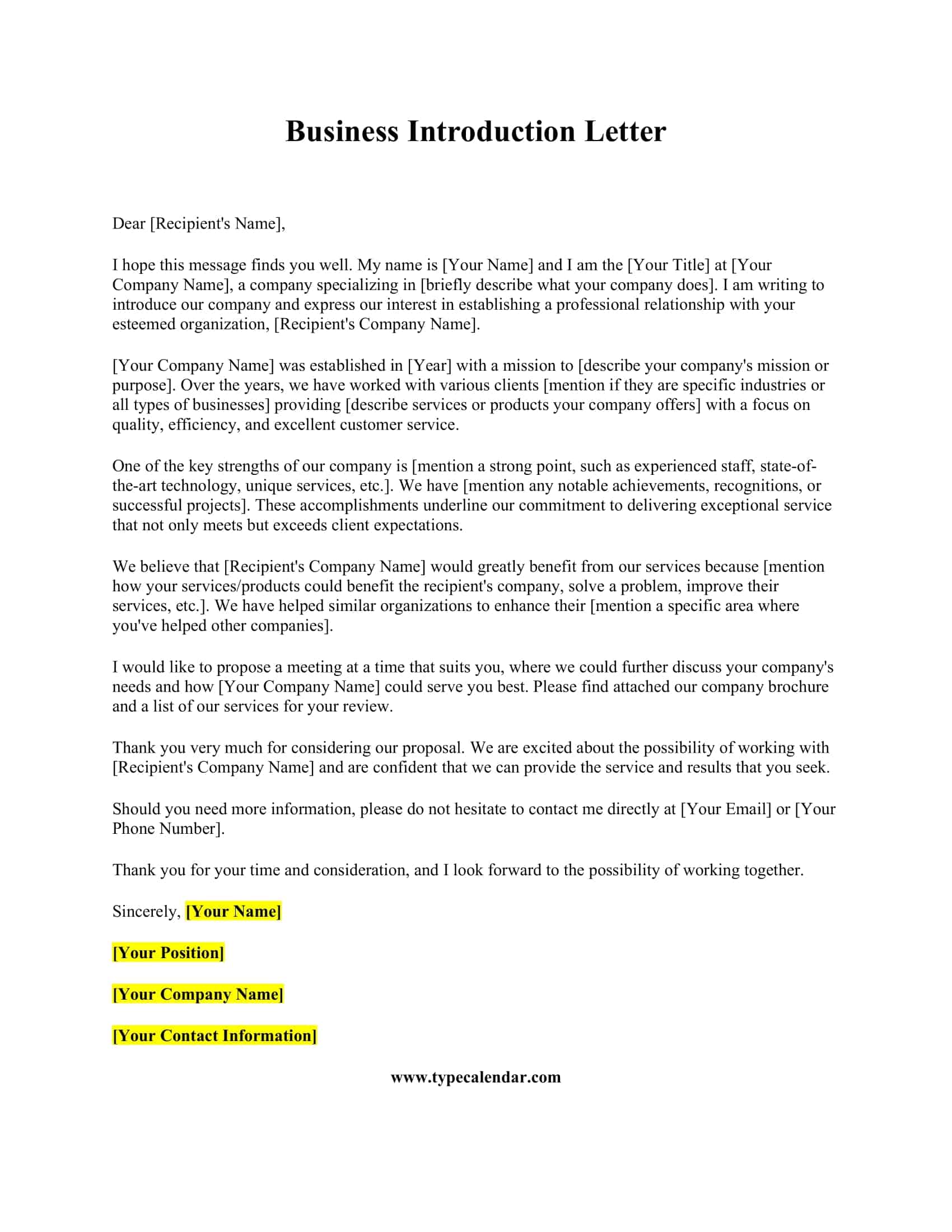





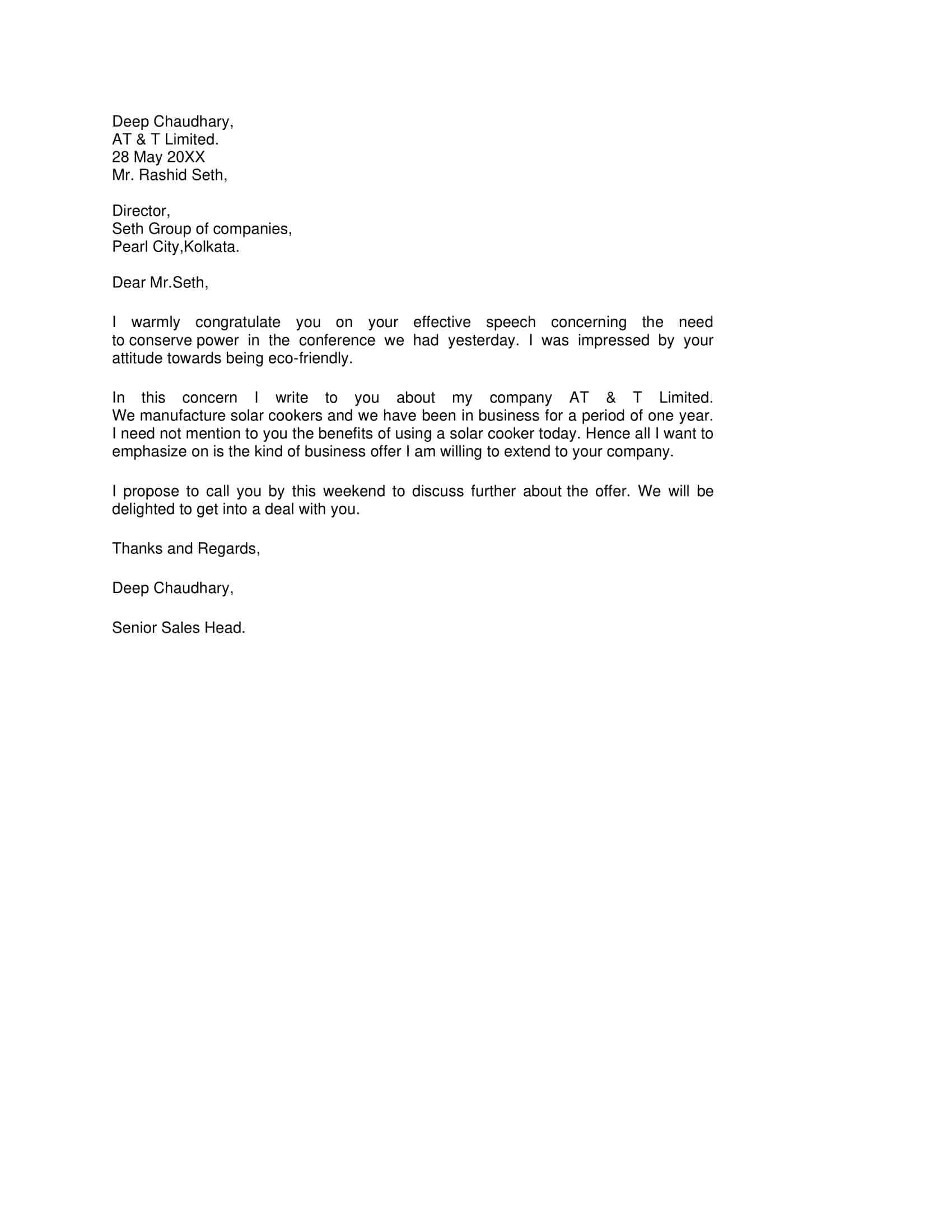




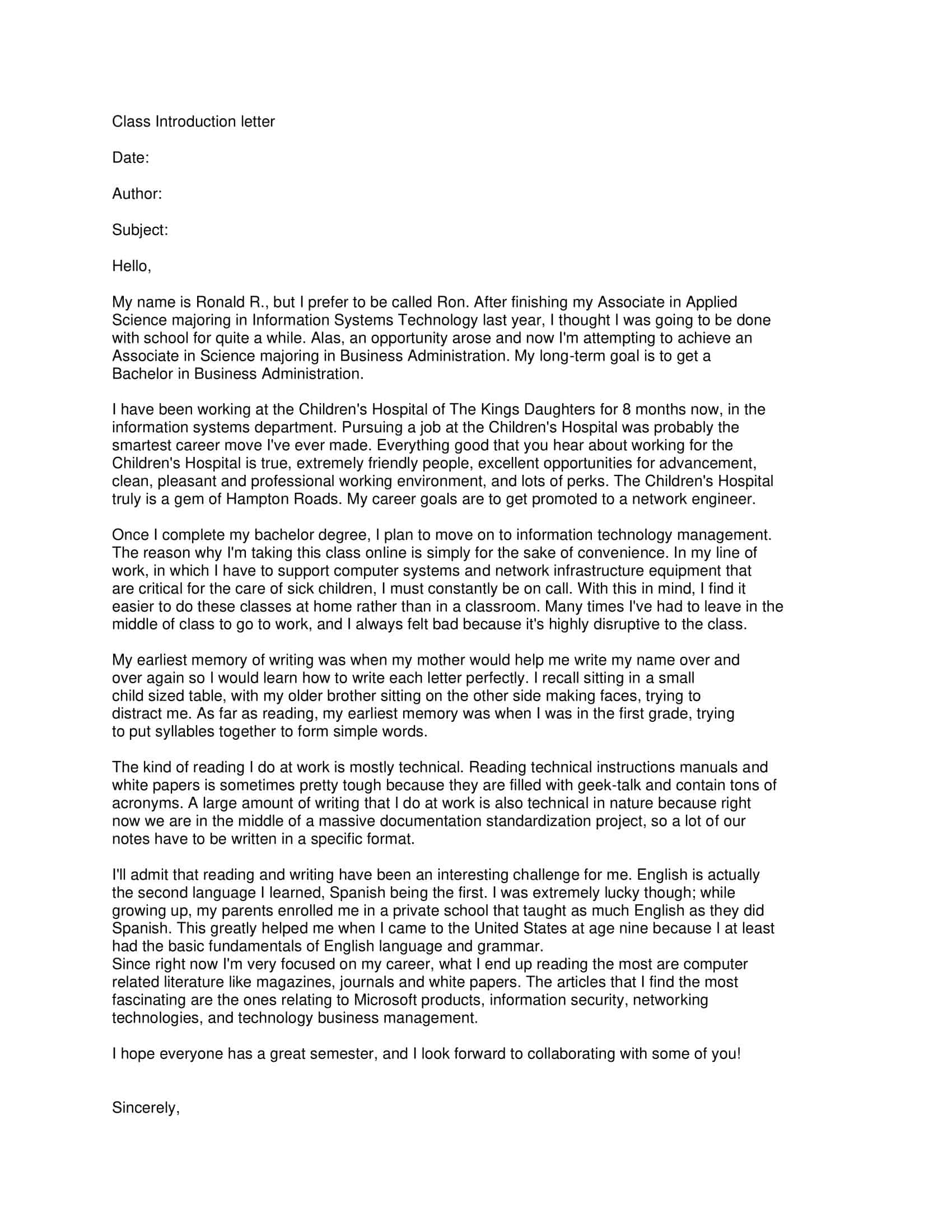

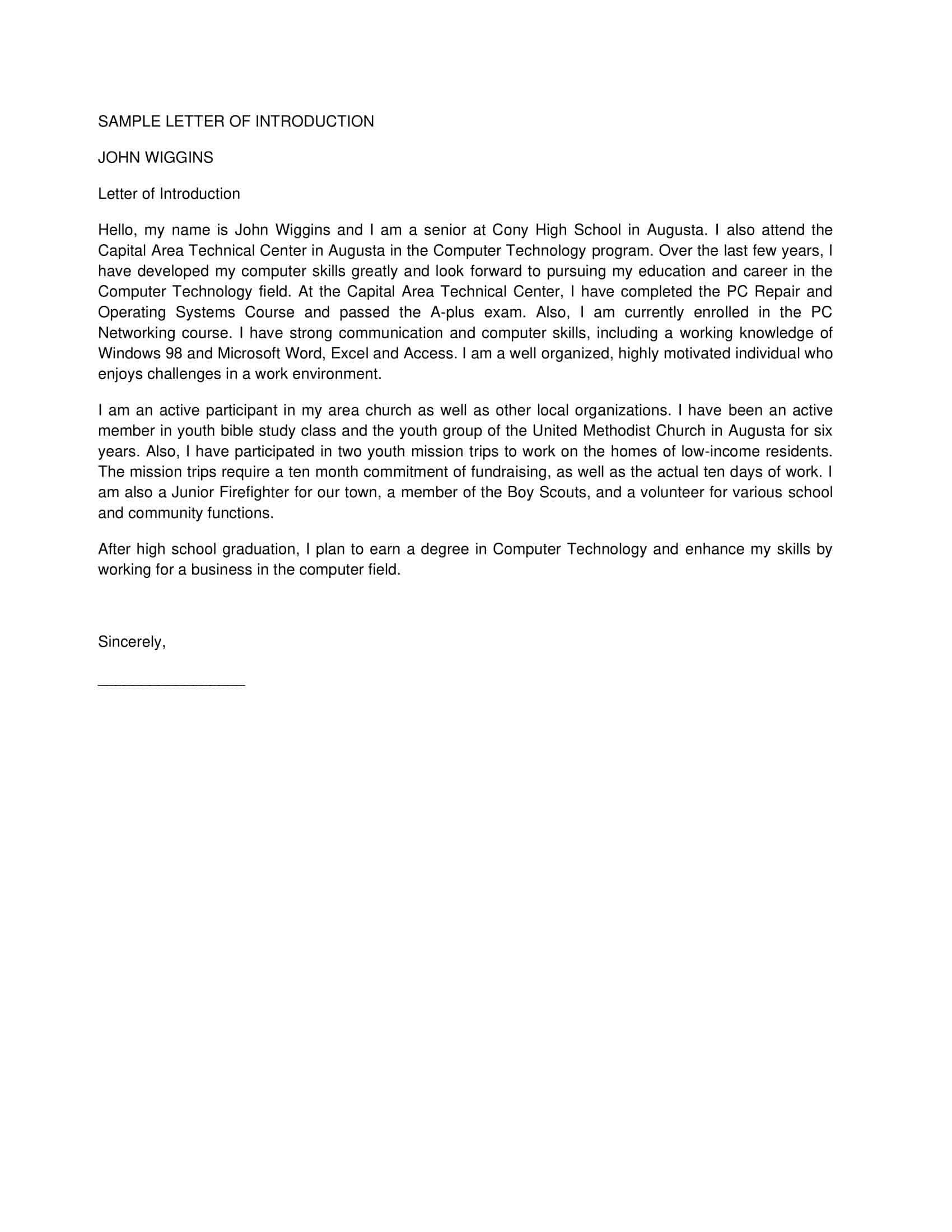






















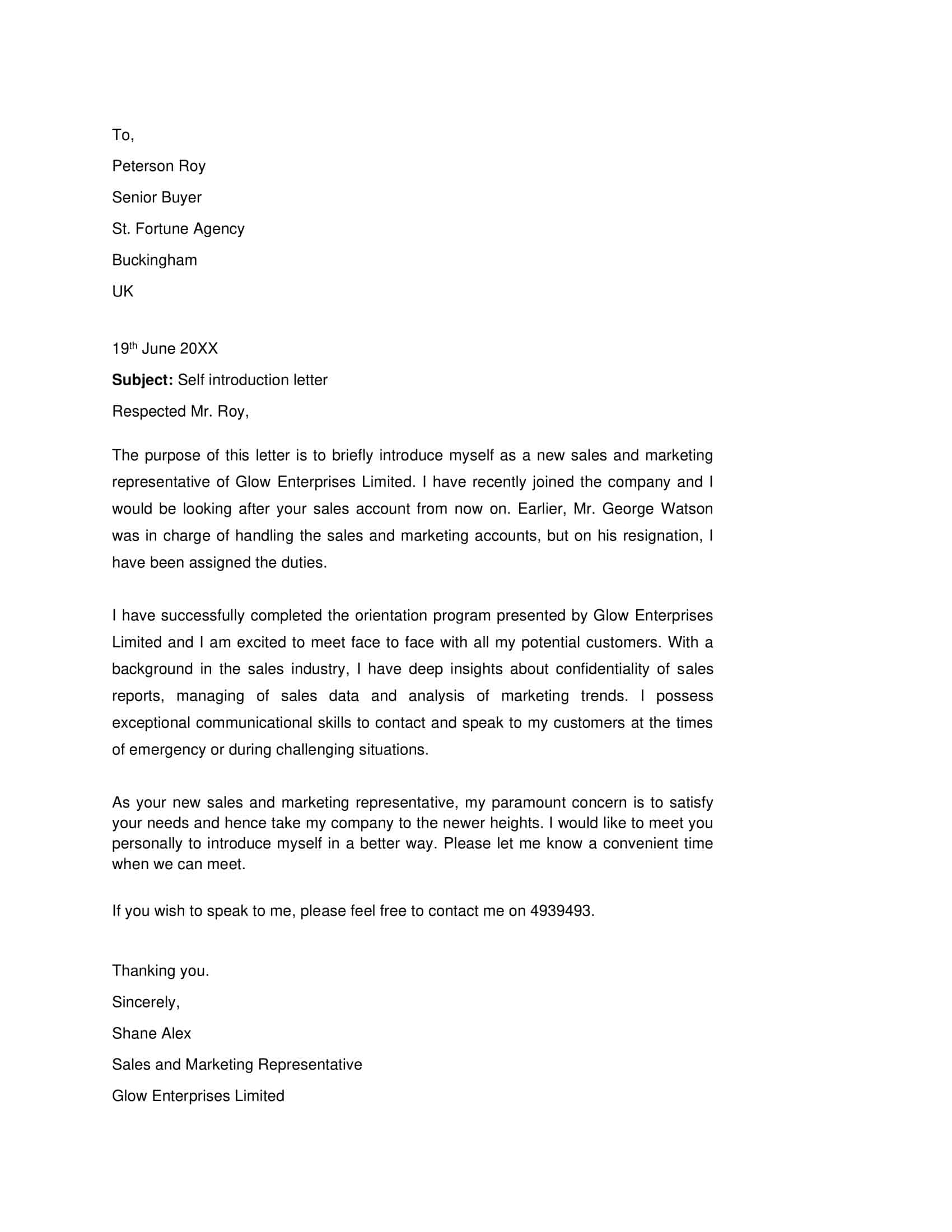















![Free Printable Friendly Letter Templates [PDF, Word, Excel] 1st, 2nd, 4th Grade 1 Friendly Letter](https://www.typecalendar.com/wp-content/uploads/2023/05/Friendly-Letter-150x150.jpg 150w, https://www.typecalendar.com/wp-content/uploads/2023/05/Friendly-Letter-1200x1200.jpg 1200w)
![43+ Printable Leave of Absence Letter (LOA) Templates [PDF, Word] / Free 2 Leave of Absence Letter](https://www.typecalendar.com/wp-content/uploads/2023/01/Leave-of-Absence-Letter-150x150.jpg 150w, https://www.typecalendar.com/wp-content/uploads/2023/01/Leave-of-Absence-Letter-1200x1200.jpg 1200w)
![Free Printable Congratulation Letter Templates [PDF, Word] Examples 3 Congratulation Letter](https://www.typecalendar.com/wp-content/uploads/2023/05/Congratulation-Letter-150x150.jpg 150w, https://www.typecalendar.com/wp-content/uploads/2023/05/Congratulation-Letter-1200x1200.jpg 1200w)

Thank you for writing such an informative post and interesting article.